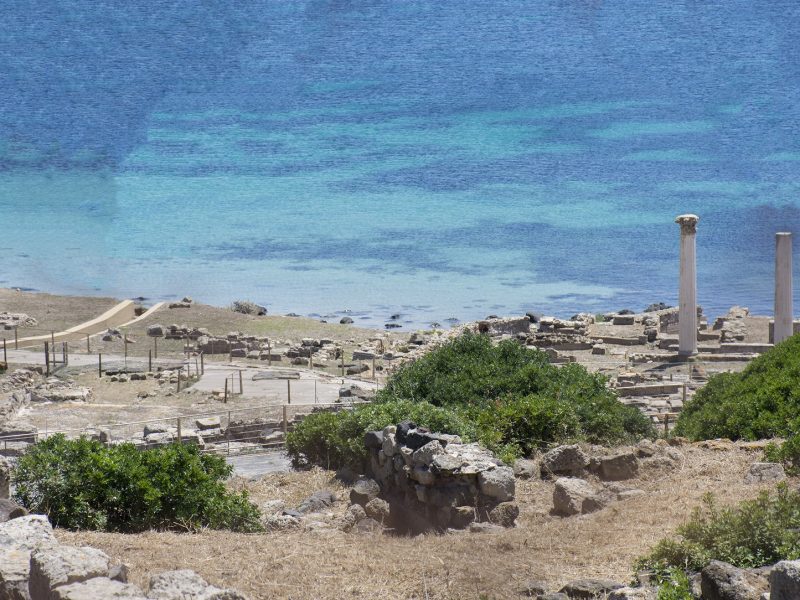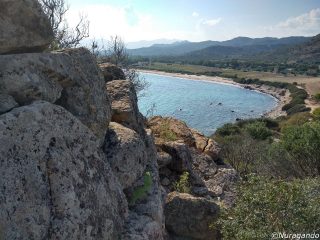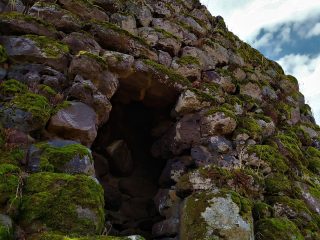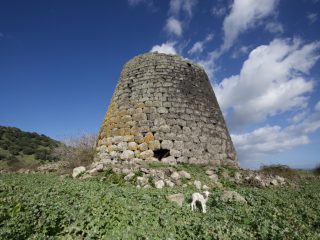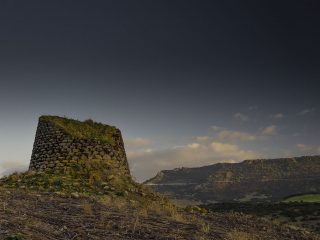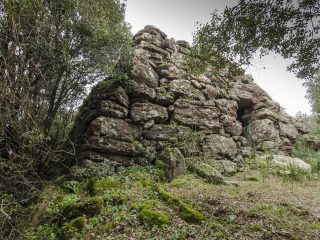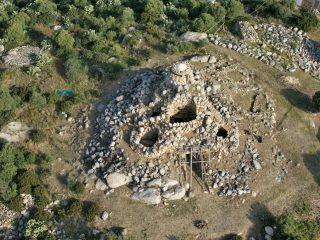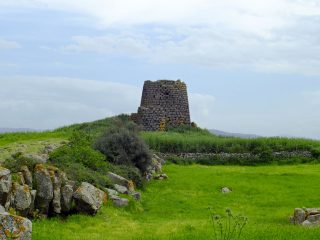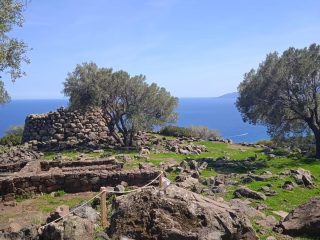Tharros is a city of Phoenician origin, founded in the VII century B.C. at the tip of the Sinis Peninsula, which played a key role in the Punic and Roman eras and was only finally abandoned in the Middle Ages.
The Phoenician settlement developed on top of a Nuragic village and replaced it. Clear evidence of this phase can be found in the tophet (sanctuary used for burying children) and the two necropoles, one to the south of the city of Capo S. Marco and the other to the north, facing the modern-day town of San Giovanni di Sinis.
The Carthaginian invasion of Sardinia in the VI century B.C., is the point at which the city was first established, with the construction of a number of buildings, some of which are still visible. Indeed, at that time, the imposing fortified wall was erected as well as the establishment of an artisan neighbourhood specialised in working iron, and important places of worship like: the temple ‘with Doric half columns’, the K temple, the temple of Demeter, and the Tetrastyle temple.
When the Romans invaded the island (238 B.C.), they brought aspects of Italic culture which blended inextricably with the original culture, giving rise to a very interesting architectural period. The re-paving of the cobbled streets complete with sewers from an orthogonal project, upgraded the city in line with Roman city planning, superimposing the previous Punic layout. The construction of an important aqueduct and the incredible system for lifting the water using norias (large hydraulic wheels) were the apex of Roman-engineering culture in the city.
The extensive Roman funeral areas spread across almost the entire western coast of the peninsula. The new kinds of graves used were: “Cappuccina” burials, mausoleums and cupa tombs, with semi-cylindrical elements covering the graves.
In the Byzantine era, the city, which was already an episcopal see, fell into decay until it was completely abandoned around 1050 A.D. becoming a quarry for building material. From the XVII century onwards, the contents of graves in the necropoles were preyed upon by treasure hunters until the first organised digs began in the 1800s. Most of the items retrieved from the tombs, like jewellery, talsimans and beetles are on display in the archaeological museums in Cabras, Cagliari, Turin and London.


